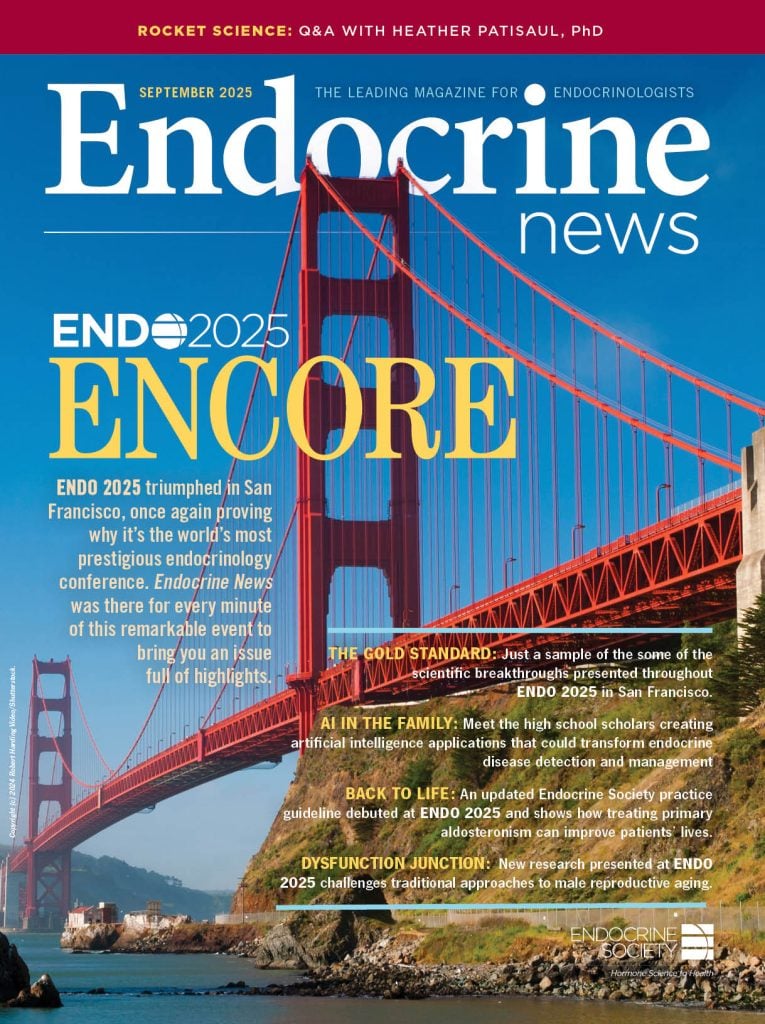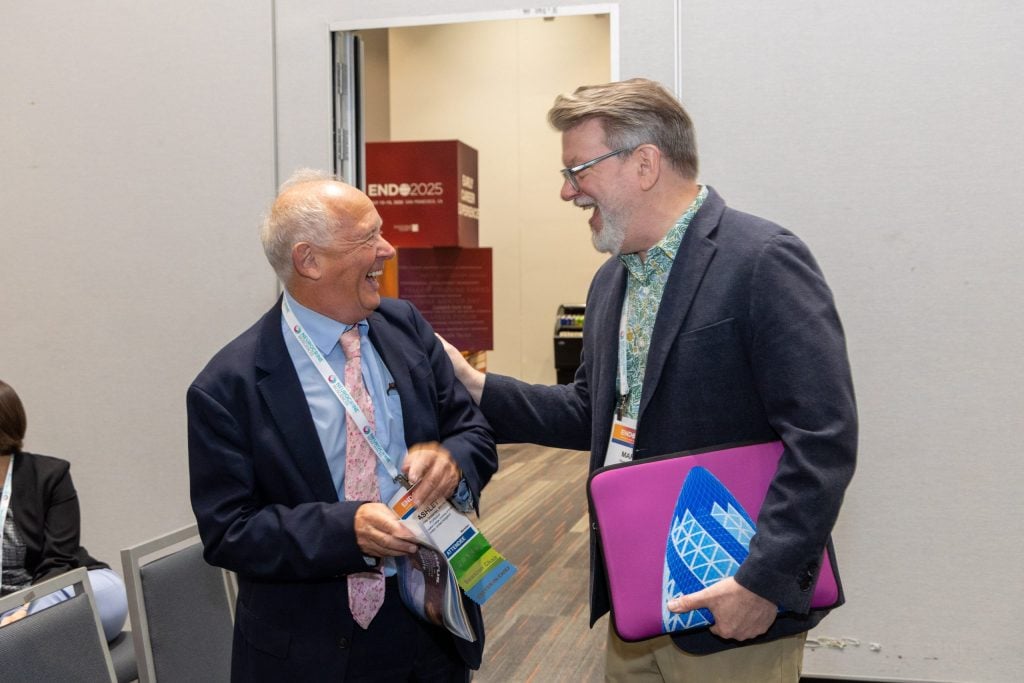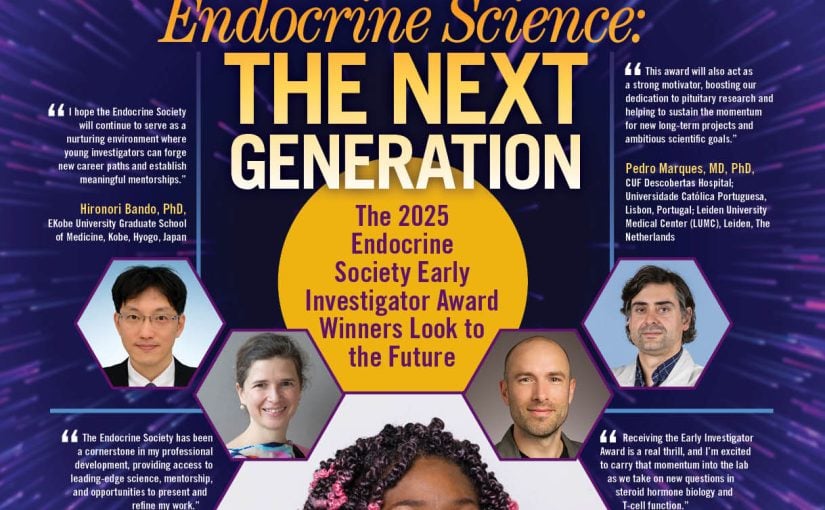
Like many of you, I am still basking in the afterglow of yet another successful ENDO, as ENDO 2025 falls further and further away in the proverbial rearview mirror. Yes, I’m already anticipating ENDO 2026 in Chicago next June, but until that time, we have an issue packed with highlights from our standout event from July in San Francisco.
Since we were in the Golden State, we called this year’s wrap-up, “ENDO 2025: The Gold Standard” because, as it does every year, the event set the standard for all endocrinology events around the world and Senior Editor Derek Bagley has highlighted some of the cutting-edge science that was presented at the Moscone Center, which turned out to be more than four days full of “eureka moments” for more than 7,000 endocrinologists who attended from around the world. From a study that looked at the emotional health of parents linked to children with growth hormone deficiency to how early-life endocrine-disrupting chemical exposure can influence food choices, the array of science presented was unmatched. And, as is our custom, there are a variety of exclusive photos from the event that you’ll definitely want to check out. If you didn’t get the chance to make the trip to San Francisco, you are in for a treat!
Back when I was in high school, my biggest worry was whether I was going to be able to master a specific trumpet solo at the annual Christmas concert. Kelly Horvath introduces us to high school scholars Ramya and Kavin Elangovan whose research may actually help change the way artificial intelligence (AI) is used to treat certain endocrine disorders in “AI in the Family: Revolutionary Artificial Intelligence Applications Transform Endocrine Disease Detection and Management.” Ramya says that “listening to top endocrinologists from around the world discuss the clinical realities of managing diabetes, the complexities of endocrine cancer and other conditions, and the daily challenges patients face provided an invaluable, real-world context for the AI models we design.” It would be more than a little amazing to think that this research developed by two high school students and presented at ENDO 2025 could feasibly change the future of how endocrine cancers are treated. And, by the way, I nailed that solo in Sleigh Ride back in high school.

Michael Zitzmann, MD, PhD, traveled to San Francisco from Germany to present his poster that shed light on a new link between men’s sexual well-being and their metabolic health that Kelly discusses in detail in “Dysfunction Junction.” Zitzmann details his research with us that looks at this seldom-studied relationship and says that when men present with sexual complaints — especially erectile dysfunction — “clinicians should not only consider testosterone levels but must also assess metabolic health comprehensively. Our findings strongly support the view that sexual function can serve as a sentinel marker for broader metabolic disturbances.” And, once again, ENDO was the site for new breaking research, here that could feasibly change the way aging men’s reproductive health is treated.
It has now become something of a tradition for the Endocrine Society to unveil new treatment guidelines at the annual conference and ENDO 2025 was certainly no exception as “Primary Aldosteronism: An Endocrine Society Clinical Practice Guideline” was officially released. Senior Editor Derek Bagley details these new guidelines in “Back to Life.” The new treatment standards essentially show how primary aldosteronism treatments can actually change lives, as the guidelines’ co-author William F. Young, Jr., MD, MSc, shares with Endocrine News, saying that when a surgical cure for primary aldosteronism is provided, these patients are some of the most grateful in the field of medicine. Their quality of life is markedly improved, and hypertension is either improved or cured,” he says. “I have one patient whom we surgically cured nine years ago, and I still get an e-mail from him every year on the anniversary date of his surgery. He thanks our endocrine surgeon and me for ‘giving me my life back.’ This type of outcome is not an exception, it is the rule.” By the way, the complete text of these new life-improving guidelines is in this month’s Journal of Clinical Endocrinology & Metabolism.
Again, these are just a few highlights of what was taking place over four days during ENDO 2025 in San Francisco in July; there was so much more that we would need at least 10 more issues of nothing but ENDO 2025, and it still wouldn’t be enough. This is why anyone who misses out on ENDO does so at their own peril, not just due to the valuable information being presented throughout the conference but the connections and reconnections that are constantly being made throughout the conference. Don’t fret: ENDO 2026 is only a few months away!
ENDO 2025 Editor’s Photo Album




